Table of Contents
ToggleDiscover Senji Kotta
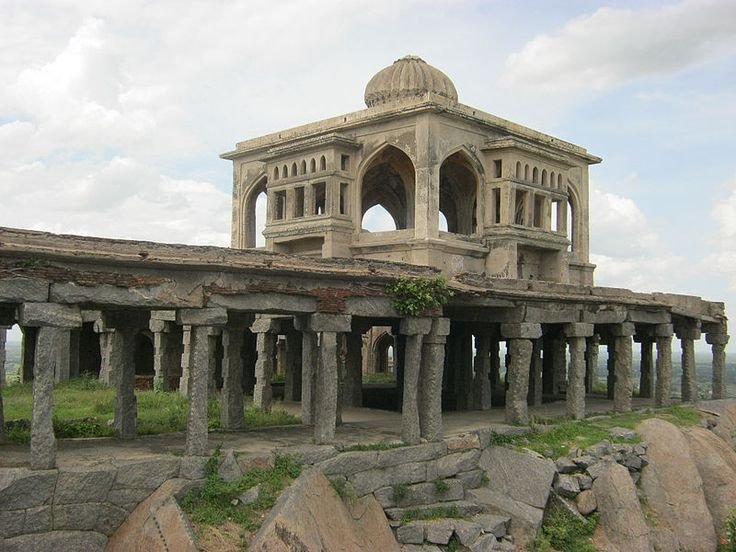
Introduction to Senji Kottai
Hidden among the rocky hills of Tamil Nadu lies one of South India’s most remarkable yet lesser-known architectural marvels Senji Kottai, also known as Gingee Fort. Steeped in history and mystery, this ancient citadel is a symbol of strength, strategic brilliance, and cultural heritage. Often referred to as the “Troy of the East,” this majestic fort was considered nearly impregnable and has withstood the trials of centuries, witnessing the rise and fall of several dynasties.
Located in the Villupuram district, Senji Kottai is not just a fort it’s an entire fortified city. Enclosed within massive stone walls and spread across three hillocks Rajagiri, Krishnagiri, and Chandrayandurg the fort complex spans over 7 square kilometers. Its unique triangular layout and elevated positioning made it a strong defensive structure in medieval warfare. The rugged landscape and architectural planning demonstrate the brilliance of ancient Indian military architecture.
The origin of Gingee Fort Tamil Nadu dates back to the 9th century when it was initially built by the Chola dynasty as a small fortification. However, it gained prominence in the 13th century under the rule of the Kurumbars and was later developed extensively by the Nayaks of Gingee. The fort changed hands many times through history captured by the Bijapur Sultans, the Marathas under Shivaji, the Mughals, the French, and finally the British. Each ruler left their mark, contributing to the fort’s unique blend of architectural influences.
What makes Senji Kottai particularly fascinating is its self-sustaining structure. It features temples, granaries, water tanks, hidden passageways, prison cells, and even a seven-story Kalyana Mahal (marriage hall) with a distinct Indo-Islamic design. The fort was built with the intent to endure long sieges and function independently without external supplies. Walking through its remnants today, one can still sense the echoes of soldiers, priests, traders, and kings who once lived within its walls.
Another intriguing aspect of this fort is the myths and legends surrounding it. Locals believe that the fort is protected by divine energy and has hidden treasures buried deep within its chambers. Some tales even narrate ghost stories tied to the long-abandoned halls. Whether or not one believes in the supernatural, the mystique of Senji Kottai is undeniable.
For modern day travelers, the fort offers a perfect blend of adventure and history. Climbing the steep trails to the hilltop citadels rewards visitors with panoramic views of the surrounding countryside. The fort is especially beautiful at sunrise and sunset, when the rocks reflect golden hues and cast dramatic shadows on the landscape.
Today, Gingee Fort Tamil Nadu is recognized as a protected monument by the Archaeological Survey of India (ASI) and attracts history buffs, architecture enthusiasts, trekkers, and photographers alike. Though it doesn’t yet enjoy the same tourist attention as other forts in India, its raw beauty and historic significance make it a must-visit destination for anyone seeking to explore Tamil Nadu’s rich past.
In essence, Senji Kottai is more than a relic of history—it is a living story carved in stone, echoing the tales of valor, culture, and engineering brilliance. Whether you’re drawn by its architectural grandeur or the legends that shroud its walls, the fort promises an unforgettable experience.
Historical Significance of Senji Kottai
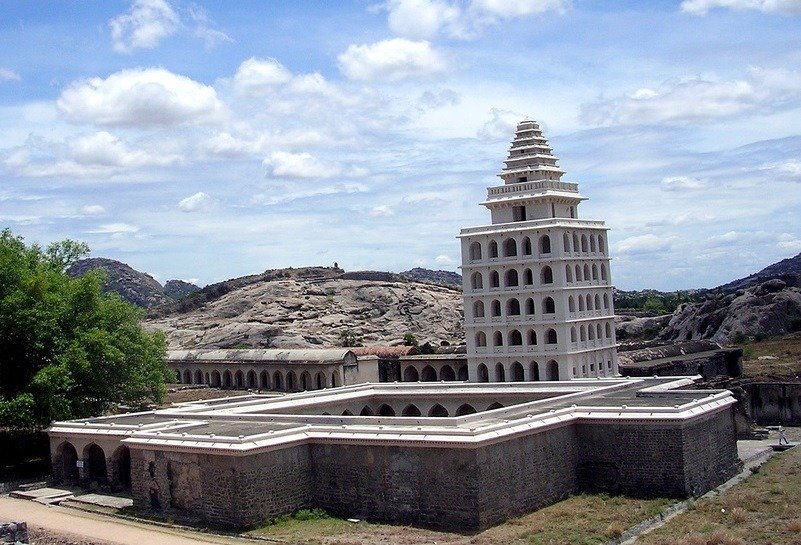
Senji Kottai, also known as Gingee Fort, is one of the most historically significant forts in South India. Its history is a fascinating tale of conquests, power struggles, and cultural exchanges that spanned several centuries and involved numerous kingdoms, dynasties, and colonial powers. Strategically located in the Villupuram district of Tamil Nadu, Senji Kottai was built not just as a military fortress, but as a thriving urban stronghold that played a crucial role in the defense and governance of the region.
The fort’s origins can be traced back to the Chola dynasty in the 9th century, when it was first established as a small military outpost. However, its prominence rose significantly in the 13th century when the Kurumbars fortified it further. The surrounding terrain, composed of rocky hills and natural defenses, made it an ideal location for a military base. Over time, the fort was transformed into a formidable citadel that could withstand large-scale attacks and long sieges.
During the 16th century, the Nayaks of Gingee under the larger Vijayanagara Empire expanded and strengthened the fort. They constructed the famous Kalyana Mahal, granaries, watchtowers, temples, and reservoirs, turning the fort into a self-sufficient city. These developments helped Gingee Fort emerge as one of the most secure fortresses of the time.
Following the fall of the Vijayanagara Empire, the fort became a coveted prize among rival powers. In 1677, Shivaji Maharaj, the legendary Maratha warrior, captured Senji Kottai from the Bijapur Sultans. He recognized its military and strategic value and made efforts to reinforce its defenses. Under the Marathas, the fort briefly enjoyed a new era of importance in South Indian politics.
In 1698, the Mughals under General Zulfiqar Khan laid siege to the fort for more than eight years before finally capturing it. This prolonged siege highlights the fort’s formidable design and resilience. After its capture, Gingee Fort was used by the Mughals as a garrison town and played a role in their southern campaigns.
The 18th century saw another series of dramatic events. The French East India Company occupied Senji Kottai briefly during their southern expansion but were soon driven out by the British, who later incorporated the fort into the Madras Presidency. Under British rule, the fort lost its strategic value and was eventually abandoned, marking the end of its military importance.
Despite its decline, Senji Kottai remains a powerful symbol of Tamil Nadu’s layered history, representing a confluence of Tamil, Maratha, Mughal, Islamic, and European architectural and cultural influences. The fort is a living record of South India’s dynamic political landscape, where power frequently changed hands but the spirit of resistance and survival endured.
The fort’s significance also lies in its unique defensive layout. Unlike most Indian forts, which were typically built on a single hill, Senji Kottai is spread across three hills Rajagiri, Krishnagiri, and Chandrayandurg each with independent fortifications. This made it nearly impossible for enemy forces to capture all sections at once, earning it a reputation as “the most impregnable fort in India” by the British.
In modern times, Senji Kottai has been recognized as a protected monument by the Archaeological Survey of India. Restoration efforts are ongoing to preserve its historical structures and to educate future generations about its importance.
To visit Senji Kottai is to step into a rich tapestry of Tamil Nadu’s past—a place where kings ruled, warriors fought, and cultures clashed. Its walls have witnessed centuries of change, making it one of the most valuable historical landmarks in the region.
Architecture and Structure of the Fort
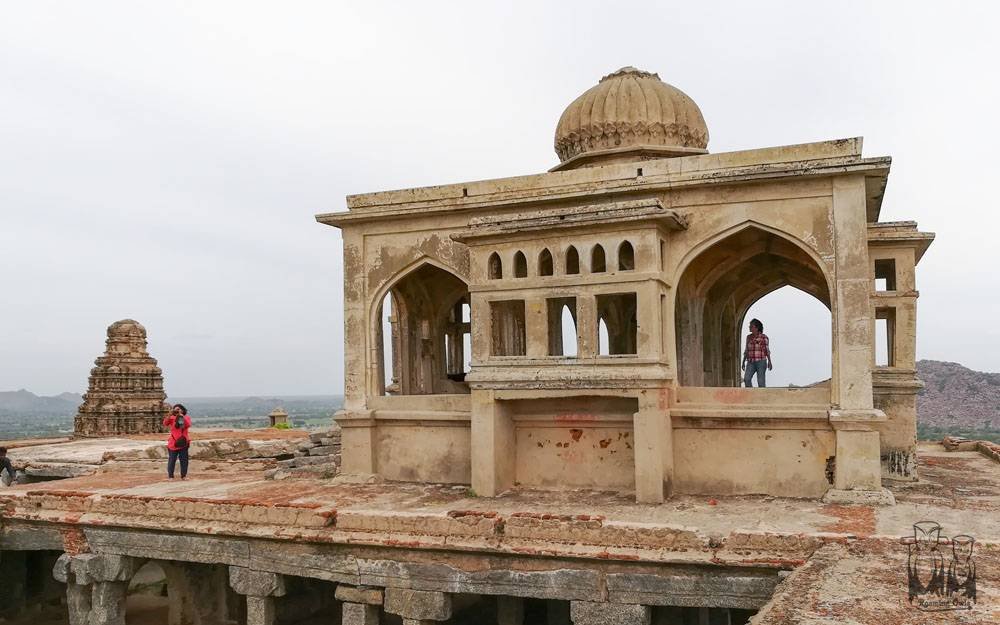
The architecture of Senji Kottai, or Gingee Fort, is a remarkable example of strategic military engineering combined with cultural and architectural aesthetics. Unlike many other Indian forts, Senji Kottai is uniquely spread across three separate hillocks Rajagiri, Krishnagiri, and Chandrayandurg each fortified independently but forming a single defensive network. This three-part structure made the fort incredibly difficult to invade and earned it the nickname “the Troy of the East.”
Rajagiri (King’s Hill)
Rajagiri is the tallest and most fortified of the three hills. It features a massive seven storey Kalyana Mahal a striking Indo Islamic style wedding hall with a central tower and arched balconies. The hill also houses granaries, water reservoirs, a gymnasium, an elephant tank, and temples, all enclosed by massive stone walls with watchtowers and battlements. The steep stairways and winding paths make access challenging, enhancing its defense.
Krishnagiri (Krishna’s Hill)
Krishnagiri lies opposite Rajagiri and is the second most significant structure. It was used mainly as a military outpost and storage area. The hill has several rock cut steps and a small temple, with vantage points for monitoring enemy movement. The simplicity of its layout was designed to facilitate rapid response during attacks.
Chandrayandurg (Chandrayand Hill)
The third hill, Chandrayandurg, served as an auxiliary fortification and was likely used for secondary defense and surveillance. Though smaller in size, it completed the triangular layout of the fort and added another layer of protection.
Fortification and Planning
The outer walls of Senji Kottai stretch across miles, built with large granite blocks seamlessly joined without mortar. Massive gates with bastions and iron spikes protected against war elephants and battering rams. Numerous hidden tunnels, escape routes, and underground chambers allowed defenders to move safely and swiftly even during sieges.
The fort also included temples (Shiva and Vishnu), mosques, a granary, and living quarters, reflecting the multi-religious and multi ethnic nature of the fort’s various rulers. Its rainwater harvesting systems and self-sustaining design were far ahead of their time.
Legends and Stories Behind the Fort
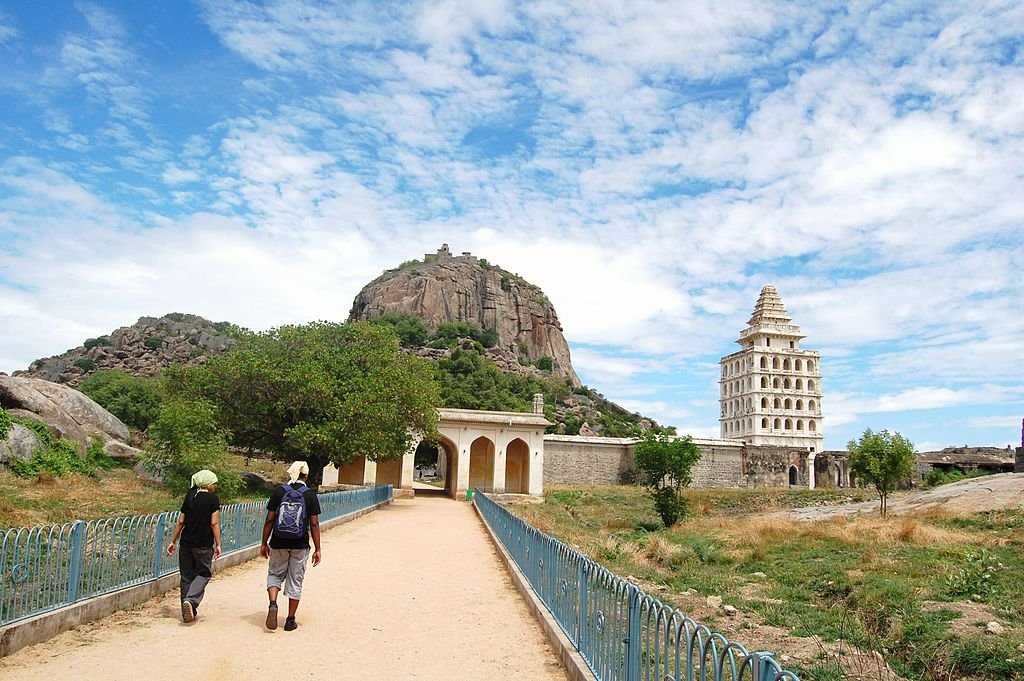
Senji Kottai, or Gingee Fort, is not only an architectural marvel but also a place steeped in myth, mystery, and folklore. Over the centuries, countless stories have been passed down by locals and travelers, adding an air of intrigue to this ancient fortress. These tales ranging from romantic tragedies to ghost stories bring life to the weathered stones of the fort and enhance its historical appeal.
The Ghost of the Royal Consort
One of the most well-known legends is that of a royal queen who tragically ended her life within the walls of the Kalyana Mahal. According to local lore, the queen was the consort of a commander who died defending the fort. Grief-stricken, she is said to have leapt from the tower of the Mahal. Locals believe her spirit still roams the fort at night, especially around the Kalyana Mahal, and some even claim to have heard the faint sound of anklets echoing through the silent corridors.
Shivaji’s Secret Tunnel
Another story revolves around the great Maratha king Shivaji, who briefly captured Senji Kottai from the Bijapur Sultanate in the 17th century. It is said that Shivaji used a secret tunnel now lost or sealed to enter and escape the fort unseen. Though this claim hasn’t been historically verified, the fort’s numerous underground chambers and partially collapsed passages have given weight to this legend among locals and history buffs alike.
Buried Treasures and Curses
Many believe that hidden treasure lies buried somewhere deep within the fort, sealed off during the Mughal or Maratha rule. According to the tale, an ancient curse protects the treasure, and anyone attempting to retrieve it would suffer grave misfortune. This legend continues to attract treasure hunters, though no discoveries have ever been officially reported.
A Fort Blessed by Sages
Some stories suggest that the location of the fort was chosen due to its spiritual energy. It is said that sages once meditated on the rocky hills, and their blessings ensured that the fort would remain unconquered for centuries. This belief persists even today, with visitors often paying respects at the small shrines found across the hills
Nearby Attractions Around the Fort
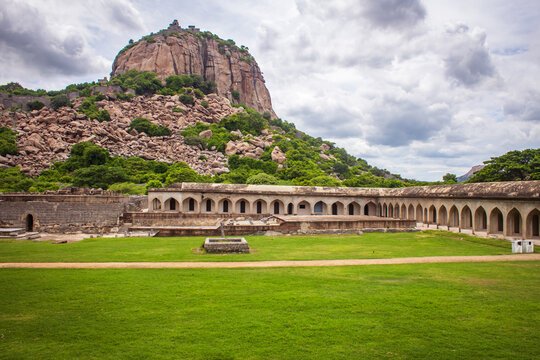
While Senji Kottai (Gingee Fort) is undoubtedly the highlight of the region, its surroundings offer several other attractions that make a visit even more enriching. From ancient temples and scenic hills to spiritual retreats and historical landmarks, the area around Gingee Fort in Tamil Nadu provides a perfect blend of culture, nature, and heritage for travelers.
Ranganatha Temple
Located at the base of the Gingee Fort complex, the Ranganatha Temple is dedicated to Lord Vishnu and features a majestic reclining idol. The temple architecture reflects the Dravidian style and showcases intricate carvings, stone pillars, and a peaceful ambiance—ideal for those interested in history and spirituality.
Venugopalaswamy Temple
This lesser-known but beautiful temple is located close to the Krishnagiri part of the fort. Dedicated to Lord Krishna, the temple is known for its simple yet elegant design and age-old stone sculptures. It offers a tranquil setting amidst the ruins and is a favorite spot for photography and quiet reflection.
Melmalayanur Angala Parameswari Temple
About 32 km from Gingee, the Melmalayanur Temple is dedicated to the goddess Angala Parameswari and is a popular pilgrimage site. Devotees from all over Tamil Nadu visit this temple, especially during the new moon (Amavasya) nights. The temple is unique for its powerful rituals and vibrant local traditions.
Thiruvannamalai (65 km away)
For those willing to travel a little further, Thiruvannamalai is a must-visit. Famous for the Annamalaiyar Temple, a grand Shiva temple at the foot of the Arunachala Hills, it is one of the holiest Shaivite sites in India. The town is also known for Ramana Maharshi Ashram, attracting spiritual seekers from around the world.
Villupuram Town
Just 35 km from the fort, Villupuram serves as a convenient stop for transportation and accommodations. The town itself has a few interesting places like local markets, ancient temples, and colonial-era churches that give insight into the region’s cultural fabric.
Scenic Countryside and Trekking Trails
The natural surroundings of Senji are equally captivating. The rocky hills, open plains, and rural villages provide excellent opportunities for nature walks and photography. The treks around the fort hills, especially at sunrise or sunset, offer breathtaking views of Tamil Nadu’s countryside.
How to Reach Senji Kottai

By Road:
From Chennai: Approx. 160 km (3.5 to 4 hours drive) via NH 32 and NH 38
From Pondicherry: Approx. 70 km (1.5 hours) via Tindivanam
From Villupuram: Approx. 37 km (45 minutes)
Regular government and private buses are available from Chennai, Pondicherry, Tindivanam, and Villupuram to Gingee town.
By Train:
Nearest railway station: Villupuram Junction (37 km away)
Well-connected to major cities like Chennai, Madurai, and Trichy
From Villupuram, you can take a taxi or bus to reach the fort
By Air:
Nearest airport: Pondicherry Airport (70 km) – limited flights
Major airport: Chennai International Airport (160 km)
From the airport, take a cab or bus to reach Gingee
Local Transport:
From Gingee bus stand, the fort is just 1 km away
Auto-rickshaws and local cabs are easily available
Entry Timings and Fees for Senji Kottai

Opening Hours
Fort gates open daily at 9:00 AM and close by 5:00 PM
Climbing access is generally halted around 3:00 PM, as the ascent and descent take considerable time
- Some sources mention ramping down entry by 4:30 PM with final closure by 5:00 PM
Entry Fees
Visitor Type Fee (₹) Indian Citizens ₹ 20 – ₹ 30 SAARC / BIMSTEC Nationals ₹ 20 Foreign Tourists ₹ 250 – ₹ 300 Children under 15 Free
Trekking Tips and Safety

Trekking at Senji Kottai (Gingee Fort) is an adventurous experience, but it requires good preparation. The climb involves steep granite steps, uneven paths, and rocky slopes, especially towards Rajagiri Hill, the tallest of the three. Begin your trek early in the morning to avoid the harsh midday sun and complete it before the entry cut-off.
Wear comfortable shoes with a good grip, and carry sufficient water, as there are no vendors inside the fort complex. A hat, sunglasses, and sunscreen are highly recommended to protect against the heat.
Be cautious near steep drops and old structures do not lean on fragile walls or climb unsafe ruins. Solo trekking is not advisable; go with a group or local guide if possible. Avoid trekking during rainy or extremely hot days.
Stay alert, respect the heritage site, and follow safety signs for a memorable and safe visit.
Visitor Tips for Senji Kottai
Start Early
The best time to visit the fort is early in the morning (around 7:30 AM). It helps you avoid the afternoon heat and gives you plenty of time to explore all three hill forts—Rajagiri, Krishnagiri, and Chandrayandurg.
Wear Comfortable Footwear
Exploring Senji Kottai involves a lot of climbing and walking on uneven stone paths. Wear sturdy shoes or trekking sandals with good grip.
Carry Water and Snacks
There are limited facilities inside the fort, so carry sufficient water, light snacks, and a small backpack. Staying hydrated is especially important in the summer months.
Dress Light but Covered
Choose light cotton clothes that cover your skin to protect yourself from the sun. A hat, sunglasses, and sunscreen are also highly recommended.
Hire a Local Guide (Optional but Useful)
A knowledgeable local guide can bring the fort’s history and legends to life with fascinating stories and lesser-known facts.
Respect the Site
The fort is a protected monument under the Archaeological Survey of India. Avoid littering, graffiti, or damaging structures. It’s important to preserve this heritage for future generations.
Avoid Climbing Unstable Areas
Some sections of the fort, especially at higher altitudes, may be unstable or unsafe. Stick to marked paths and be cautious on narrow stairways and ridges.
Mobile Signal and Connectivity
Network coverage may be weak in parts of the fort, so it’s wise to download maps or information in advance.
Final Thoughts
Senji Kottai (Gingee Fort) is more than just a historical monument—it’s a journey through centuries of warfare, architecture, mythology, and cultural evolution. While it may not enjoy the same fame as other Indian forts like those in Rajasthan or Delhi, its unique structure, resilience, and legends make it one of Tamil Nadu’s hidden gems. A trip to this fort is not only visually rewarding but mentally enriching, especially for history lovers, photographers, and adventurers
Frequently Asked Questions (FAQs)
1. What is the best time to visit Gingee Fort?
The best time to visit is between October and March, when the weather is pleasant for trekking.
2. How long does it take to explore the fort?
You’ll need around 3 to 4 hours to explore all three hills and key structures at a relaxed pace.
3. Is the fort suitable for senior citizens or children?
The climb is steep and challenging. It may be difficult for senior citizens or very young children. However, the lower areas can still be enjoyed.
4. Are there guides available?
Yes, local guides are available at the entrance for a small fee. They offer historical context and help navigate the site.
5. Is photography allowed inside the fort?
Yes, photography is allowed and highly encouraged—especially at scenic points like Kalyana Mahal and Rajagiri viewpoint.
6. Are there any food stalls or facilities inside the fort?
No, there are no food stalls inside. It’s best to carry water and light snacks.







